Whether you’ve decided to start with sustainability reporting because your company is required to, or because you simply want to share your sustainability story, a good first step is to make sure you understand the regulations that apply to your company, and how they are currently being addressed.
Sustainability reporting in the EU: obligated?
In Belgium, for example, large enterprises employing more than 500 people are now legally obliged to report on their social and environmental impact. This is in line with EU Directive 2014/95/EU, which stipulates that large companies in member states must now disclose information on their sustainability and diversity practices, effective for financial years beginning on or after January 1, 2017.
The EU rules on non-financial reporting only apply to large public-interest companies with more than 500 employees. This covers approximately 6,000 large companies and groups across the EU, including listed companies, banks, insurance companies, and other companies designated by national authorities as public-interest entities.
While the EU directive offers general guidelines on non-financial reporting, member countries are able to define and align the regulation with local reporting requirements. For example, 80% of EU countries have enlarged the definition of companies that fall into the directive’s ‘public interest’ heading, extending it to include municipalities, public utilities, health insurance companies, state railways, and others.
Countries can also choose the framework for their national laws, using the EU framework, their own national framework, or a recognized international framework. They can also choose if or how penalties will be applied for non-compliance.
» Get a free analysis of your sustainability report «
Sustainability reporting: SDG and GRI
Whether your company is legally obliged to report on its sustainability practices, or chooses to do so, there are two generally accepted models for sustainability reporting: SDG and GRI.
Sustainable Development Goals
The Sustainable Development Goals (SDGs) are part of the United Nations Global Compact’s Agenda 2030. The 17 SDGs chosen by the UN are aimed at achieving a better future for all, including ending extreme poverty, fighting inequality and injustice, and protecting our planet. Companies can use the SDGs as a guide, or framework, to direct their sustainability strategies, choosing an area or areas to focus on (i.e. clean water, no poverty, gender equality, climate action, etc.), and communicate about their progress.
While four in 10 of the biggest companies across the globe have begun to mention SDGs in their reporting, [i] according to a report on SDG reporting authored by KPMG, the framework for reporting on corporate efforts toward the SDGs is still pretty uneven. Some companies have selected ‘priority SDGs’, and report on their achievements toward these specific SDG goals. (Interestingly enough, not many are reporting on instances where corporate practices might negatively impact an SDG.) So far, Germany, France and the UK are leading the way with SDG reporting, compared to other countries.
Global Reporting Initiative
GRI stands for the Global Reporting Initiative, an independent international organization based in Amsterdam that has pioneered sustainability reporting since 1997. GRI’s Sustainability Reporting Standards cover economic, environmental and social issues. They’re available as detailed, downloadable guides that you can use to prepare your sustainability reports.
With the GRI Standards, it’s similar to the SDGs in terms of selecting priority issues to focus on. Certain areas that are covered by the GRI indices will be more relevant to you as a company (e.g. for a transport company, making progress in cutting CO2 emissions will probably be more material than wanting to reduce the company’s waste volumes). The GRI encourages companies to focus on the GRI indices that will have the biggest impact, instead of all of the indices.
Linking SDGs to GRI reporting standards
To understand how to link Sustainable Development Goals to GRI reporting, GRI, along with UN Global Compact, and the World Business Council for Sustainable Development (WBCSD), has developed a guide called the SDG Compass. It’s designed to help companies figure out how to align their sustainability strategies to the SDGs, as well as measure and manage their contribution to the Sustainable Development Goals.
Integrating sustainability goals with your B2B marketing
Another important link is between your company’s sustainability practices and your B2B marketing and corporate communication programs. Your stakeholders – prospects, customers, employees, partners, suppliers, investors, communities – want to know how you are being sustainable. Make it easy for them by highlighting your sustainability story wherever you can.
We can help you get started with sustainability reporting, including what framework to choose, and how to apply the SDG or GRI reporting models into your sustainability reporting. And we can help with ideas on how to maximize your sustainability story in your marketing communications. Contact us to find out more.
[i] ‘SDG Reporting: What good looks like and why it matters,’ KPMG, Lead authors: José Luis Blasco, Adrian King, Santhosh Jayaram. https://home.kpmg.com/au/en/home/insights/2018/02/how-to-report-on-the-sdgs.html



